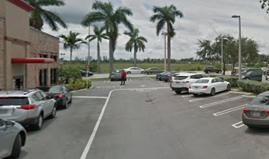Proximal Hamstring Tear
The hamstrings are a group of muscles on the posterior (back) side of the thigh. They play an important function in hip extension and knee flexion. There are 4 muscles including the semitendinosis, semimembranosis, and the long and shorts heads of the biceps femoris.
A tear of the proximal hamstrings denotes a rupture of the origin of the tendons from the ischial tuberosity of the pelvis (or sits bones) at the gluteal fold. They are generally an acute injury such as a fall or with water skiing or other sport activities. In most cases, there is a combined hyper-flexion force to the hip while the knee is held in extension – or the same hamstring stretch one would do before starting a workout activity. However, if the force is sudden and severe, it may lead to an overload of the hamstring muscles and their tendon attachments to the bone.
An acute tear of the proximal hamstring from their origin on the ischial tuberosity may result in sudden pain at the gluteal fold at the buttock. A severe tear that completely avulses the hamstrings can lead to a significant hematoma that may extend down the thigh, behind the knee and into the leg. You might feel significant weakness with extending your hip or flexing your knee and it may be difficult to sit down or walk. With time, they can lead to persistent pain in the gluteal fold or at the buttock or “sits bones” region with simple activities such as sitting on a hard surface. They can also lead to significant pain and weakness with activities such as running, skating, jumping, and squatting.
For acute injuries in active patients, you may be recommended to undergo surgery to repair the tendons back to the tuberosity. This is the preferred treatment in patients who plan to return to running, jumping, and squatting activities. This may be performed through an endoscopic technique by inserting a small camera into the area of the rupture and repairing the tendons to the bone with sutures. This procedure has a very high success rate in treating pain and restoring strength to the hamstring tendons. Results are improved if the repair is performed in the acute phase, or within the first 3 weeks from injury. If the tear is too large or too retracted, an open hamstring repair may be performed with excellent results treating pain in restoring strength to the hamstring tendons. Chronic tears may require an open approach as well. In some cases with significant retraction, a graft may be required to make up the distance between the retracted tear and bone.













